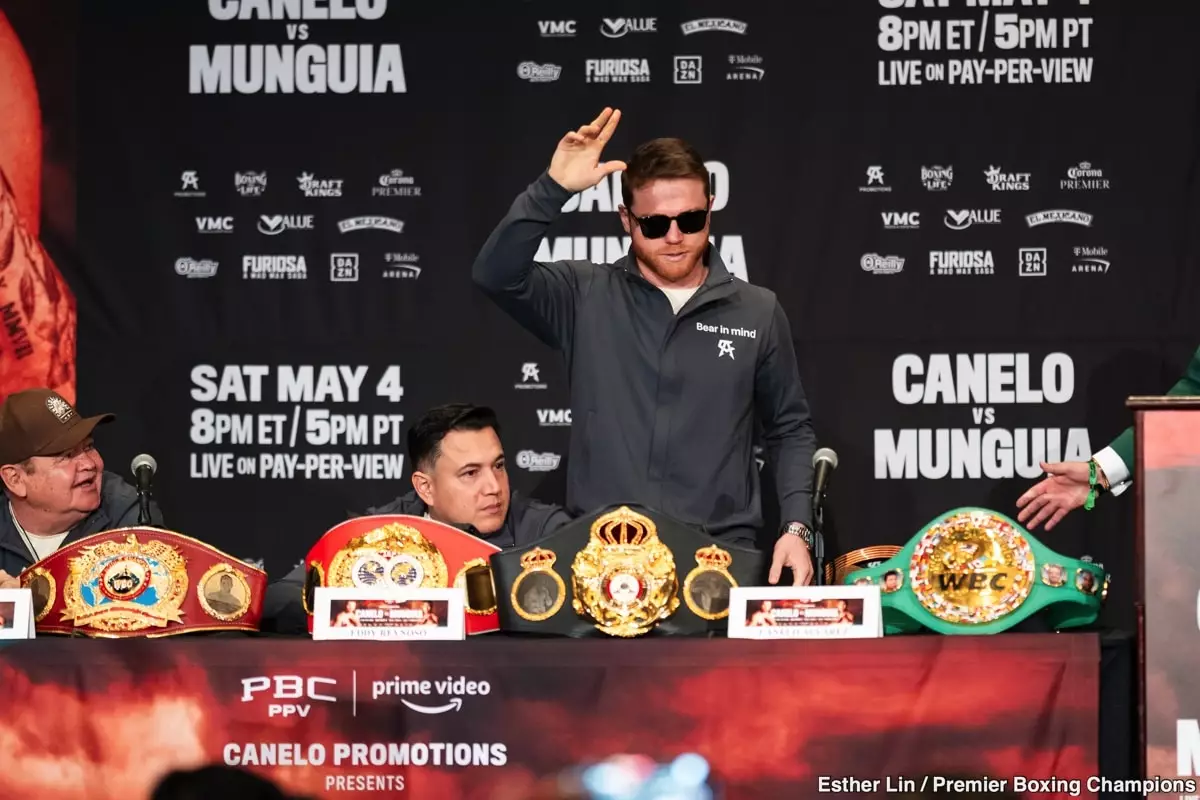The landscape of professional boxing is undergoing a dramatic transformation, one that reflects broader trends in sports entertainment. Recently, Eddie Hearn commented on the potential bout between Canelo Alvarez and Jake Paul, suggesting that this match could eclipse the allure of a fight against Terence Crawford. While many purists may balk at the idea, Hearn’s assertions highlight the shifting priorities in the sport, particularly with respect to drawing power and financial gain.
Canelo Alvarez, a decorated champion with a record of 62 wins and only 2 losses, has established himself as one of the best in the sport. However, the prospect of fighting Jake Paul is not solely about athletic merit; it’s about financial dividends. According to Hearn, Alvarez could command an astonishing $100 million for this fight—a figure that speaks volumes about the business side of boxing. This financial incentive inevitably becomes a pivotal factor when weighing potential opponents.
Comparing a fight with Crawford to that of Paul provides an illuminating perspective on attractiveness within boxing. Terence Crawford is an accomplished boxer, yet he lacks the mainstream appeal that Jake Paul brings to the ring. Hearn pointedly notes that Crawford, despite his skill, doesn’t generate much excitement, especially outside Nebraska, painting him as a less commercially viable opponent when compared to the controversial figure of Paul.
Jake Paul, on the other hand, has built a unique brand that blends boxing with social media celebrity status. Fans and critics alike acknowledge his lavish lifestyle, as he reportedly nets upwards of $100 million from his boxing exploits. This draws a fascinating dichotomy: a traditional boxer with extensive accolades versus a YouTube star turned pugilist—each representing distinct facets of modern fame. Canelo’s potential fight with Paul reflects not just an opportunity for a straightforward matchup but a potential goldmine in pay-per-view revenues.
The prospect of a Canelo versus Paul fight raises critical questions about the essence of boxing itself. Is it a sport that celebrates technical proficiency, bravery, and skill, or has it shifted towards being a spectacle driven by marketability? Many boxing enthusiasts argue that a matchup against Crawford would be compelling due to his strategy and skill set—elements that are celebrated in championship boxing. However, Hearn’s comments indicate that Canelo’s choice may lean towards spectacle over traditionalist values when financial sums are factored in.
Hearn also suggested that Canelo’s interest in the Paul fight demonstrates his understanding of market dynamics. While the idea of “spanking” Paul may appeal to some fans, it’s evident that many boxing aficionados would prefer to see Canelo in a technically charged bout against a fighter like Crawford. Yet, in the eyes of promoters and managers, the fight’s financial viability often outweighs these considerations.
As boxing continues to evolve, the dichotomy between traditional fighting styles and the new wave of entertainment-based matchups will likely persist. The potential Canelo Alvarez versus Jake Paul fight illustrates broader trends, as they encapsulate the complexities of a sport transitioning into a more commercially driven era. While classic rivalries and high-caliber matchups will always hold intrinsic value, the allure of spectacle—backed by monetary gain—may well dictate the future of boxing and how fans engage with the sport they love.


Leave a Reply